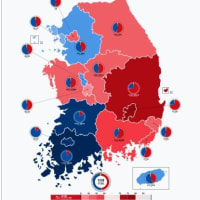●December 2006 - Dollar-Real Estate-Stock Markets: US consumer's insolvency, a catalyst of the impact phase of the global systemic crisis
(Public Release GEAB N°9 / November 16, 2006 )
The American mid-term elections have now passed and, only a week later, as announced by LEAP/E2020 in GEAB N°8 of last October 15, the “euphorisation” of US voters/consumers and world financial players seems to have already passed wit them. The development process of the global systemic crisis has resumed its course, artificially stopped last July due to the upcoming mid-term elections, as shown by the recent changes in the Dollar’s value and by the latest US economy indicators. In parallel, a series of topics which had curiously disappeared from the pages of financial media these last months is reappearing, such as the end of the “carry-trade” based on the Yen [1], increasing fears of the risk of implosion of the market for derivatives and “hedge funds” [2] and of course the uninterrupted fall of US real estate [3] with its procession of negative consequences on American growth[4] (all these developments generating from now on increasing reflection as to the health of the US banking sector, one depending more and more on unsound debt [5]). For the team of LEAP/E2020, all these trends, which mark the beginning of the impact phase of the global systemic crisis, have a common catalyst, and that is the insolvency of the US consumer in the framework of a generalized degradation of the quality of credit to all US financial and economic operators [6].

Chart 1 – US Household Debt
For more than five years the American consumer has been the “cash-cow” of US growth, contributing more than 70% to the resulting progression of the United States economy. Stimulated by the easy money policy promoted by the US Federal Reserve in order to avoid a catastrophic recession feared after the explosion of “internet bubble”, the US consumer rushed into a frenzy of purchases of consumer goods. Encouraged by banks and the whole US financial system, he exceeded his own financing capacities and plunged since 2004 into generalized debt [7] and into a situation not seen in the United States since the dip of the Great Depression post 1929, namely a negative saving rate [8].
The Federal Reserve, the Bush administration and the republican Congress, as well all the financial and banking sectors of the country then fed the fiction of a continuous and fast enrichment via the development of the “real estate bubble” which convinced the majority of the country’s middle class, including its least ‘well off’, to rush into a strategy of purchase, and often of speculation, in real estate [9]. In parallel, the very strong growth of real-estate prices made it possible for the financial sector to offer loans for household consumption, linked with the “value” of the real estate . Because of these operations relating to more than 2,500 billion dollars since 2004, these same lenders and other banks have in same time increased considerably their results, gaining the admiration of stock markets by their extraordinary success, whereas these same assessments were potentially seen to be depending more and more on the future evolution of the real estate market.

Chart 2 – Recent collapse of consumer credit linked to real estate (source Safehaven)
Indeed, the obvious risk of this strategy of the banking sector was due to the possibility of an inversion in real estate trends. In the event of a strong and sustained fall in the prices and volumes of the real estate market simultaneously on the whole of the US territory, the “magic circle” of individual enrichment and the collective growth would become an “infernal spiral” of personal debt and generalized recession. Indeed, households in debt would suddenly become insolvent because of the collapse in the price of the real estate guaranteeing their loans, while the whole of the banking sector would be found in a double trap with on one side an increasing share of the loans not refunded due to personal bankruptcy, and on the other a financial assessment quickly down-grading because of the depreciation of the value of the guaranteed loans (namely the real estate) [10].
For the LEAP/E2020 team, it is from now on time to remove the ‘conditional’ from this scenario. It is currently happening throughout all the United States and constitutes a catalyst of the impact phase of the global systemic crisis. The US consumer, i.e. the US middle class, basically becomes insolvent [11], victim of overwhelming debt, a negative rate of saving, the bursting of the real estate bubble, the rise of interest rates and the collapse of US growth. All these elements are dependent, and mutually reinforcing, to plunge the United States, starting from the end 2006, into an economic, social and political crisis without precedent [12].
Very concretely, this November issue of GEAB sounds two “LEAP/E2020 Alerts”:
- The first relating to banking and finance sectors which, by the way of “hedge funds” and “bad quality credit”, will be at the centre of the impact phase of the global systemic crisis;
- And the other, which again amplifies the Alert published in GEAB N°4, relating to European real estate, with as an illustration, an analysis of the market trends of the British and French real estate.
http://www.europe2020.org/en/section_global/151106.htm
【要旨】
米国全土に渡って不動産価格が同時に大きく下落し回復しない場合、個人を富ませ集団を成長させる魔法の輪が個人債務の地獄のような急上昇と全般的な景気後退に変化する。実際、借金を抱えた世帯はその融資を保証する不動産価格の崩壊により急激に破産状態となるだろう。銀行業界は全体が自己破産のため返済されなくなった不良債権の割合の増加と、保証付き融資(すなわち不動産)の価値下落による財務評価の急速な降格という二つの抜き差しならない状態に追い込まれる。
今やこのシナリオから「条件付きの」という言葉を省く時が来た。これは現在、米国全土で現実に起きており、世界システム危機の衝撃期の引き金となるものだ。米国の経済成長の70%を支えてきた米国の消費者、つまり中産階級は根本的に支払い能力がなくなり、過剰な債務・負の貯蓄率・不動産バブルの破裂・金利の上昇・米国の成長の崩壊の犠牲者となる。これらの要素全ては相互に関連し補強し合っている。その結果、米国は2006年の年末から始まる先例のない経済的・社会的・政治的危機に突入する。
この11月の記事では、以下の二つの警告を行う。
1.銀行・金融分野は世界システム危機の衝撃期の中核となる。これはヘッジファンドの現状と不良債権によるもの。
2.英仏両国でも不動産バブル崩壊が発生する。
【関連情報】
●A LEAP/E2020 Alert on European housing market - January 2007, the bubble explodes in Europe too
- Abstract GEAB N°9, November 16, 2006 -
In the same way as last February, LEAP/E2020 had been one of the very rare organisations to announce for spring 2006 the beginning of a collapse of the real estate market in the United States, our teams anticipate now that it will be in January that on both sides of the Channel, one will see the collapse of real estate markets in terms of price.
In terms of volume the collapse has already been taking place in France since the summer 2006. It should have hit the United Kingdom during the first half of 2006 but it was pushed back by the policies of high-risk loans implemented by the British financial sector
ドーバー海峡の両岸で2007年1月に不動産価格の崩壊が発生すると予測される。フランスでは2006年夏から取引量の崩壊が既に始まっている。英国でも2006年前半に同様の事態が起きるはずであったが、英国金融業界のハイリスクな貸し出し方針によってそれは先送りにされた。
http://www.leap2020.eu/A-LEAP-E2020-Alert-on-European-housing-market-January-2007,-the-bubble-explodes-in-Europe-too_a252.html?PHPSESSID=39a30172b563dc2bda80e4b0d3815b28
●Why are UK house prices still rising? - Money Week
http://www.moneyweek.com/file/20836/why-are-house-prices-rising.html
●世界システムの危機は11月7日の米国中間選挙をきっかけに半年~1年間の衝撃期に突入
http://blog.goo.ne.jp/princeofwales1941/e/67f636d362f5a8ea01a8a6f3dda0e266
●米国を上回るスペインの不動産バブルの破裂がユーロの信認に与える激震
http://blog.goo.ne.jp/princeofwales1941/e/8a9e00864259e978fca5c3f8c593efd7
●致命的欠点を抱えたユーロ:ドル暴落と同時期に起きうるドイツのユーロ離脱とマルク復活・ユーロ崩壊
http://blog.goo.ne.jp/princeofwales1941/e/ad0a4e9b4f640c357532644e11bee6b1
【私のコメント】
LEAP/E2020は、2006年12月に米国、2007年1月に欧州(英仏両国)での不動産バブル崩壊を予測している様である。米国の不動産バブル崩壊は、消費者支出の激減・銀行の財務体質悪化・ヘッジファンドの破産などを通じて恐慌に繋がるであろう。
日本が1990年代から現在まで経験した不動産・株式バブル崩壊後の不況と金融システム危機と比較した場合、現在の米国は膨大な経常赤字を抱えている点でより悪い状態にあり、それ故により悲惨な恐慌状態が予想される。
欧州については、不動産バブルの影響のほとんどないドイツと、米国を遙かに上回る悲惨なバブル状態にあるスペイン、その中間の英仏両国など、国によるばらつきが大きい。内需の点からは経済大国の英仏両国の不動産バブル崩壊は大問題であるが、金融システムやユーロ体制の信認の観点からはスペインの方が重要であろう。人口4000万人のスペインの住宅着工が年間80万件で、英仏独三カ国(人口2億人)の合計より多く、独仏より貧しいのに住宅は独仏より高額、1400万戸の住居のうち300万戸が空家、住宅ローン利用者の95%は変動金利で、史上最低金利での契約というのは余りに危険だ。貿易赤字の多さでも住宅着工の多さでも不動産価格高騰の酷さ(フロリダで住宅価格が平均世帯年収の6.25倍なのに、マドリッドで14倍)でもスペインは米国を圧倒している。中・東欧諸国も過剰な対外債務と不動産バブルを有しており全体に国力が低下し、不動産バブルは存在するものの膨大な経常黒字と対外債権を有するロシアの優越が明瞭になると思われる。
欧州の不動産バブル崩壊後は、経済力だけでなく政治力でも欧州におけるドイツの優越が明瞭となり、英仏はドイツの衛星国的存在に転落するであろう。ユーロが崩壊し各国で独自通貨が再開され、ドイツはその国力の象徴であったドイツマルクを取り戻すことになる。
同様に東アジアでも、不動産バブルに依存した中国と韓国の経済が大きな打撃を受けて社会が混乱、不動産バブルの影響の小さい日本と台湾の影響力が急速に大きくなると思われる。
全体として見ると、1990年代にバブル崩壊を経験した日本、東独統合のコストとマルク喪失を経験したドイツ、ソ連崩壊後の混乱と原油価格暴落を経験したロシアの三カ国が来るべき混乱期に安定を維持し、急速に国際的影響力を高めるのではないかと想像される。
(Public Release GEAB N°9 / November 16, 2006 )
The American mid-term elections have now passed and, only a week later, as announced by LEAP/E2020 in GEAB N°8 of last October 15, the “euphorisation” of US voters/consumers and world financial players seems to have already passed wit them. The development process of the global systemic crisis has resumed its course, artificially stopped last July due to the upcoming mid-term elections, as shown by the recent changes in the Dollar’s value and by the latest US economy indicators. In parallel, a series of topics which had curiously disappeared from the pages of financial media these last months is reappearing, such as the end of the “carry-trade” based on the Yen [1], increasing fears of the risk of implosion of the market for derivatives and “hedge funds” [2] and of course the uninterrupted fall of US real estate [3] with its procession of negative consequences on American growth[4] (all these developments generating from now on increasing reflection as to the health of the US banking sector, one depending more and more on unsound debt [5]). For the team of LEAP/E2020, all these trends, which mark the beginning of the impact phase of the global systemic crisis, have a common catalyst, and that is the insolvency of the US consumer in the framework of a generalized degradation of the quality of credit to all US financial and economic operators [6].

Chart 1 – US Household Debt
For more than five years the American consumer has been the “cash-cow” of US growth, contributing more than 70% to the resulting progression of the United States economy. Stimulated by the easy money policy promoted by the US Federal Reserve in order to avoid a catastrophic recession feared after the explosion of “internet bubble”, the US consumer rushed into a frenzy of purchases of consumer goods. Encouraged by banks and the whole US financial system, he exceeded his own financing capacities and plunged since 2004 into generalized debt [7] and into a situation not seen in the United States since the dip of the Great Depression post 1929, namely a negative saving rate [8].
The Federal Reserve, the Bush administration and the republican Congress, as well all the financial and banking sectors of the country then fed the fiction of a continuous and fast enrichment via the development of the “real estate bubble” which convinced the majority of the country’s middle class, including its least ‘well off’, to rush into a strategy of purchase, and often of speculation, in real estate [9]. In parallel, the very strong growth of real-estate prices made it possible for the financial sector to offer loans for household consumption, linked with the “value” of the real estate . Because of these operations relating to more than 2,500 billion dollars since 2004, these same lenders and other banks have in same time increased considerably their results, gaining the admiration of stock markets by their extraordinary success, whereas these same assessments were potentially seen to be depending more and more on the future evolution of the real estate market.

Chart 2 – Recent collapse of consumer credit linked to real estate (source Safehaven)
Indeed, the obvious risk of this strategy of the banking sector was due to the possibility of an inversion in real estate trends. In the event of a strong and sustained fall in the prices and volumes of the real estate market simultaneously on the whole of the US territory, the “magic circle” of individual enrichment and the collective growth would become an “infernal spiral” of personal debt and generalized recession. Indeed, households in debt would suddenly become insolvent because of the collapse in the price of the real estate guaranteeing their loans, while the whole of the banking sector would be found in a double trap with on one side an increasing share of the loans not refunded due to personal bankruptcy, and on the other a financial assessment quickly down-grading because of the depreciation of the value of the guaranteed loans (namely the real estate) [10].
For the LEAP/E2020 team, it is from now on time to remove the ‘conditional’ from this scenario. It is currently happening throughout all the United States and constitutes a catalyst of the impact phase of the global systemic crisis. The US consumer, i.e. the US middle class, basically becomes insolvent [11], victim of overwhelming debt, a negative rate of saving, the bursting of the real estate bubble, the rise of interest rates and the collapse of US growth. All these elements are dependent, and mutually reinforcing, to plunge the United States, starting from the end 2006, into an economic, social and political crisis without precedent [12].
Very concretely, this November issue of GEAB sounds two “LEAP/E2020 Alerts”:
- The first relating to banking and finance sectors which, by the way of “hedge funds” and “bad quality credit”, will be at the centre of the impact phase of the global systemic crisis;
- And the other, which again amplifies the Alert published in GEAB N°4, relating to European real estate, with as an illustration, an analysis of the market trends of the British and French real estate.
http://www.europe2020.org/en/section_global/151106.htm
【要旨】
米国全土に渡って不動産価格が同時に大きく下落し回復しない場合、個人を富ませ集団を成長させる魔法の輪が個人債務の地獄のような急上昇と全般的な景気後退に変化する。実際、借金を抱えた世帯はその融資を保証する不動産価格の崩壊により急激に破産状態となるだろう。銀行業界は全体が自己破産のため返済されなくなった不良債権の割合の増加と、保証付き融資(すなわち不動産)の価値下落による財務評価の急速な降格という二つの抜き差しならない状態に追い込まれる。
今やこのシナリオから「条件付きの」という言葉を省く時が来た。これは現在、米国全土で現実に起きており、世界システム危機の衝撃期の引き金となるものだ。米国の経済成長の70%を支えてきた米国の消費者、つまり中産階級は根本的に支払い能力がなくなり、過剰な債務・負の貯蓄率・不動産バブルの破裂・金利の上昇・米国の成長の崩壊の犠牲者となる。これらの要素全ては相互に関連し補強し合っている。その結果、米国は2006年の年末から始まる先例のない経済的・社会的・政治的危機に突入する。
この11月の記事では、以下の二つの警告を行う。
1.銀行・金融分野は世界システム危機の衝撃期の中核となる。これはヘッジファンドの現状と不良債権によるもの。
2.英仏両国でも不動産バブル崩壊が発生する。
【関連情報】
●A LEAP/E2020 Alert on European housing market - January 2007, the bubble explodes in Europe too
- Abstract GEAB N°9, November 16, 2006 -
In the same way as last February, LEAP/E2020 had been one of the very rare organisations to announce for spring 2006 the beginning of a collapse of the real estate market in the United States, our teams anticipate now that it will be in January that on both sides of the Channel, one will see the collapse of real estate markets in terms of price.
In terms of volume the collapse has already been taking place in France since the summer 2006. It should have hit the United Kingdom during the first half of 2006 but it was pushed back by the policies of high-risk loans implemented by the British financial sector
ドーバー海峡の両岸で2007年1月に不動産価格の崩壊が発生すると予測される。フランスでは2006年夏から取引量の崩壊が既に始まっている。英国でも2006年前半に同様の事態が起きるはずであったが、英国金融業界のハイリスクな貸し出し方針によってそれは先送りにされた。
http://www.leap2020.eu/A-LEAP-E2020-Alert-on-European-housing-market-January-2007,-the-bubble-explodes-in-Europe-too_a252.html?PHPSESSID=39a30172b563dc2bda80e4b0d3815b28
●Why are UK house prices still rising? - Money Week
http://www.moneyweek.com/file/20836/why-are-house-prices-rising.html
●世界システムの危機は11月7日の米国中間選挙をきっかけに半年~1年間の衝撃期に突入
http://blog.goo.ne.jp/princeofwales1941/e/67f636d362f5a8ea01a8a6f3dda0e266
●米国を上回るスペインの不動産バブルの破裂がユーロの信認に与える激震
http://blog.goo.ne.jp/princeofwales1941/e/8a9e00864259e978fca5c3f8c593efd7
●致命的欠点を抱えたユーロ:ドル暴落と同時期に起きうるドイツのユーロ離脱とマルク復活・ユーロ崩壊
http://blog.goo.ne.jp/princeofwales1941/e/ad0a4e9b4f640c357532644e11bee6b1
【私のコメント】
LEAP/E2020は、2006年12月に米国、2007年1月に欧州(英仏両国)での不動産バブル崩壊を予測している様である。米国の不動産バブル崩壊は、消費者支出の激減・銀行の財務体質悪化・ヘッジファンドの破産などを通じて恐慌に繋がるであろう。
日本が1990年代から現在まで経験した不動産・株式バブル崩壊後の不況と金融システム危機と比較した場合、現在の米国は膨大な経常赤字を抱えている点でより悪い状態にあり、それ故により悲惨な恐慌状態が予想される。
欧州については、不動産バブルの影響のほとんどないドイツと、米国を遙かに上回る悲惨なバブル状態にあるスペイン、その中間の英仏両国など、国によるばらつきが大きい。内需の点からは経済大国の英仏両国の不動産バブル崩壊は大問題であるが、金融システムやユーロ体制の信認の観点からはスペインの方が重要であろう。人口4000万人のスペインの住宅着工が年間80万件で、英仏独三カ国(人口2億人)の合計より多く、独仏より貧しいのに住宅は独仏より高額、1400万戸の住居のうち300万戸が空家、住宅ローン利用者の95%は変動金利で、史上最低金利での契約というのは余りに危険だ。貿易赤字の多さでも住宅着工の多さでも不動産価格高騰の酷さ(フロリダで住宅価格が平均世帯年収の6.25倍なのに、マドリッドで14倍)でもスペインは米国を圧倒している。中・東欧諸国も過剰な対外債務と不動産バブルを有しており全体に国力が低下し、不動産バブルは存在するものの膨大な経常黒字と対外債権を有するロシアの優越が明瞭になると思われる。
欧州の不動産バブル崩壊後は、経済力だけでなく政治力でも欧州におけるドイツの優越が明瞭となり、英仏はドイツの衛星国的存在に転落するであろう。ユーロが崩壊し各国で独自通貨が再開され、ドイツはその国力の象徴であったドイツマルクを取り戻すことになる。
同様に東アジアでも、不動産バブルに依存した中国と韓国の経済が大きな打撃を受けて社会が混乱、不動産バブルの影響の小さい日本と台湾の影響力が急速に大きくなると思われる。
全体として見ると、1990年代にバブル崩壊を経験した日本、東独統合のコストとマルク喪失を経験したドイツ、ソ連崩壊後の混乱と原油価格暴落を経験したロシアの三カ国が来るべき混乱期に安定を維持し、急速に国際的影響力を高めるのではないかと想像される。




























※コメント投稿者のブログIDはブログ作成者のみに通知されます